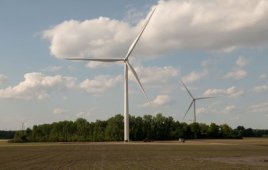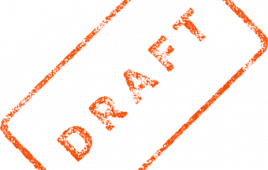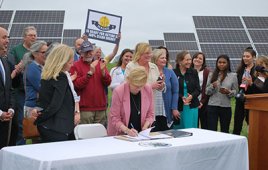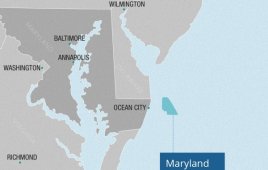 A state-of-the art servodrive for electric pitch systems was on display at WINDPOWER 2010 in the Moog booth. The PITCHmaster II was developed for the harsh conditions prevailing in rotor hubs. It operates reliably at constant internal switch gear cabinet temperatures ranging from -22°F to 158°F.
A state-of-the art servodrive for electric pitch systems was on display at WINDPOWER 2010 in the Moog booth. The PITCHmaster II was developed for the harsh conditions prevailing in rotor hubs. It operates reliably at constant internal switch gear cabinet temperatures ranging from -22°F to 158°F.
The design features several advantages, such as a capability to withstand high mechanical loads in the rotating hub. An external connection is facilitated by means of an integrated diode for EPU and dc link circuit decoupling. No need for shielded cables for the EPU because its connection is included in the EMC concept. Accurate EPU voltage measurements reduce the number of additional components in the switchgear cabinet, thus reducing installation time and increasing reliability. An integrated acceleration sensor supplies information on rotor speed, rotor position, and vibrations. This data can be used for condition monitoring equipment. An inherently earth-fault proof brake driver allows regulating holding brakes to EPU voltage level, thus reducing the number of relevant switching devices in the switchgear cabinet. The motor software also supports control of synchronous, asynchronous, or dc motors.
Lastly, the PITCHmaster II was optimized to increase its reliable operation in harsh environments. This reduces the number of maintenance intervals which leads to higher wind turbine availability.
Filed Under: Uncategorized





I have used more then 3,000 Pitch Master drives in the past. Following are the system limitations:
1) No protection for control card. Brake voltage spikes damage the card
2) Pitch master does not work with optimum performance above 40Deg.C
3) Installation of pitch drive was difficult in hub specially hardware falling & misplaced.
4) Different models for CAN communication and serial communication.
How are the above issues are settled in the new design?
Regards,
Kartik
Kartik:
I’ll forward your question and comments to the manufacturer.
Paul
Dear Paul Dvorak,
Have read many of your articles since at the moment I am designing a concept for an electric pitch controller due to I believe there is a lack of this product on demand. Thus, I would like to see if you can give me any input on the financial aspect of this product. I have read in many articles that the pitch controller accounts about 3% of a wind turbines price.
And that is where I get unsure about its product financial overview since these days many turbines range around the price of 1million and it means that the controller should vary about 30k for a 3blades turbine. Would that not sound extremely high?
Any chance you can give me an overview with regards to the financial aspect of pitch controllers if possible, please.
Andy